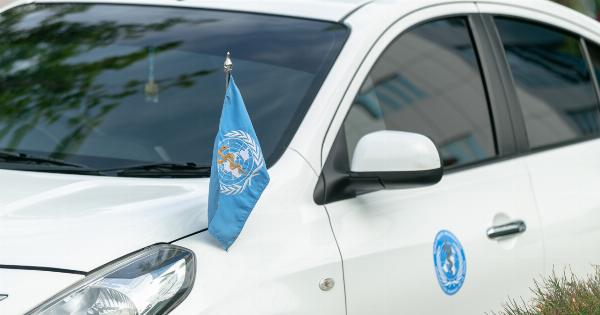The Pulmonary Society is dedicated to promoting respiratory health and wellness for individuals of all ages.
By adopting the following steps, we believe that we as a society can foster wellness and improve the quality of life for individuals with chronic lung conditions.
Step One: Educate the Public
Education is key in promoting wellness.
The Pulmonary Society believes that educating the public about the risks of smoking, the importance of vaccinations, and the benefits of exercise can help prevent the onset of lung conditions such as chronic obstructive pulmonary disease (COPD). Creating campaigns and hosting educational seminars on various respiratory-related topics can help raise public awareness on the importance of respiratory health and wellness.
Step Two: Encourage Regular Check-Ups
Prevention is key when it comes to respiratory health. Encouraging individuals to undergo regular check-ups can help detect lung conditions early on and avoid long-term complications.
Regular check-ups can help ensure that individuals with respiratory conditions receive prompt and appropriate treatment, which can help them better manage their symptoms.
Step Three: Advocate for Cleaner Air
The quality of the air we breathe has a significant impact on our respiratory health. Advocating for cleaner air can help reduce the risk of lung conditions.
The Pulmonary Society supports efforts to reduce air pollution and promote cleaner, healthier environments for individuals with respiratory conditions to live in.
Step Four: Promote Exercise and Physical Activity
Physical activity is beneficial for individuals with respiratory conditions. Promoting exercise can help improve lung function, strengthen respiratory muscles, and reduce the risk of complications.
The Pulmonary Society encourages individuals with respiratory conditions to engage in physical activity, while also providing resources and guidance to help them exercise safely and effectively.
Step Five: Empower Patients
Empowering patients with respiratory conditions can help them better manage their symptoms and improve their quality of life.
By providing education, resources, and support, individuals with respiratory conditions can take an active role in managing their health. The Pulmonary Society aims to empower patients by providing various programs and services designed to help them better manage their respiratory health.
Step Six: Support Research
Supporting research can help advance the understanding and treatment of lung conditions.
The Pulmonary Society supports initiatives and projects aimed at improving our understanding of respiratory health and promoting better treatment options for individuals with respiratory conditions.
Step Seven: Promote Smoking Cessation
Smoking is a major risk factor for respiratory conditions. Promoting smoking cessation can help reduce the risk of developing respiratory conditions such as COPD.
The Pulmonary Society provides resources and support to individuals who wish to quit smoking, while also advocating for stricter tobacco control policies.
Step Eight: Raise Funds for Respiratory Health
Raising funds for respiratory health can help support various programs, research initiatives, and services designed to improve respiratory health and wellness.
The Pulmonary Society offers various fundraising initiatives, including events and donations, aimed at raising funds for respiratory health.
Step Nine: Support Respiratory Health Services
Supporting respiratory health services can help ensure that individuals with respiratory conditions receive the care they need.
The Pulmonary Society supports various respiratory health services, including diagnostic testing, rehabilitative services, and mental health support services.
Step Ten: Engage in Advocacy
Engaging in advocacy can help promote the importance of respiratory health and wellness. The Pulmonary Society engages in various advocacy initiatives aimed at promoting respiratory health and raising awareness about respiratory conditions.
By advocating for respiratory health policies, the Pulmonary Society aims to promote better respiratory health practices and policies in communities across the country.































